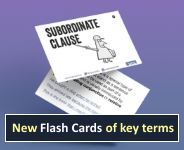Martian grammar
This is a unit about the grammar of an invented language, ‘Martian’. It uses students’ (often subconscious) understanding of morphology to help them uncover the ‘rules’ of a made-up language. To ‘crack’ the language, they will need to break down the words into meaningful parts.
The lessons that follow are aimed at different levels. Activity 1 is probably best used with Year 9 or 10 students, and Activity 2 with Year 12 or 13 students. The feedback for the activities, and further discussion about the grammatical concepts covered, can be found in the Teacher feedback resource. This can be used as a basis for discussion in class. It is designed to work with either of the activities.
These lessons are designed to be used in different places, depending on the nature and level of your classes. You might choose to use the first lesson as an introduction to grammar activity at the start of this course, or use it later on as a means of introducing particular grammatical concepts such as tense, aspect, plurals or person. Meanwhile, the second lesson is more advanced and would probably best work at the end of the course.
The tasks are designed to make pupils think about the elements of words that help to create grammatical meaning (part of what is called morphology in linguistics). While checking for correct answers is obviously one way of evaluating pupils’ understanding of grammatical concepts, the discussion of the problem can also be revealing:
- What kinds of questions are your students asking about the data they are presented with?
- What features are they looking for?
- Do they understand the metalanguage?
- Are they deducing systems of rules from the data they have been given?
Also, if you video the groups working together in this problem-solving task, you’ll have some useful data to study as a class when you explore spoken language during another part of the course.
If you want to see the full solution for Activity 1 or Activity 2, you can consult the Word document attached at the end of this page. As well as the answers to the translation questions, it gives a list of all the Martian words and word-parts with their English meanings, and a brief description of the rules for putting together Martian words and sentences. It is best not to look at the solution until after attempting the activity (by trying to break the sentences and words down into their meaningful parts). However, you can use it to give a helpful clue if students are stuck, or as a final check on the solutions found.
Welcome!

Englicious is totally free for everyone to use!
But in exchange, we ask that you register for an account on our site.
If you’ve already registered, you can log in straight away.
Since this is your first visit today, you can see this page by clicking the button below.
- Printer-friendly version
- Log in to view or leave comments

